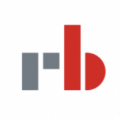The Qareon methodology builds the competencies required for the project's success based on the theories, training, and application applied.

Theory of Constraints
Rather than building a comprehensive, expensive plan to develop organizational efficiency (BPR), the theory of constraints focuses on identifying and resolving the single greatest constraint to the workflow. By optimizing resources and eliminating bottlenecks, workflow improves and throughput increases.

Lean
Lean focuses on optimizing flow and reducing waste. By resolving the bottlenecks that hinder patient care, we can reduce length of stay and decrease waste of hospital resources. The Qareon project establishes a new culture and mindset, enabling continuous long-term improvement.

Qaroline: the Application
Qaroline is a lightweight software used to track patient care pro-actively. It alerts medical staff to time-sensitive treatments, preventing delays. It identifies the bottlenecks in workflow by documenting delays in patient treatment. Read more.

Drillster: Microlearning
The Qareon Project employs a cutting-edge, contemporary microlearning application. Utilizing a combination of story-telling and questions, the app maximizes learning effectiveness. Read more.
A Sniff of Consultancy
Though most of the training is provided via our e-learning program, InnoQare consultants are on-site at the launch of the Qareon project. Consults are also available for intermittent and yearly site visits to track progress and support the organization and experts in troubleshooting and bottleneck resolution. Read more.
The theory spelled out
Watch for the full explanation.
Learn about the IMPACT
17% LoS Reduction within 24 months
The Albert Schweitzer Hospital in Dordrecht (NL), with approximately 700 beds, reduced its length of stay by 17% in two years, from 6.5 to 5.4 days. Over 80 beds became available daily, with two-thirds of these being occupied by an additional 12% of patients (see key figures on the clinic's website).

Albert Schweitzer Hospital Dordrecht (NL)
12% LoS Reduction within 6 months
At the Robert Bosch Hospital in Stuttgart (D), two departments improved their patient flow by 12% each in six months. This led to 18 to 20 fewer beds being occupied daily, creating space for converting a regular ward with 40 beds into an intensive care unit with 18 beds (see experience report in KU 2/2017).

Robert Bosch Hospital Stuttgart (D)
